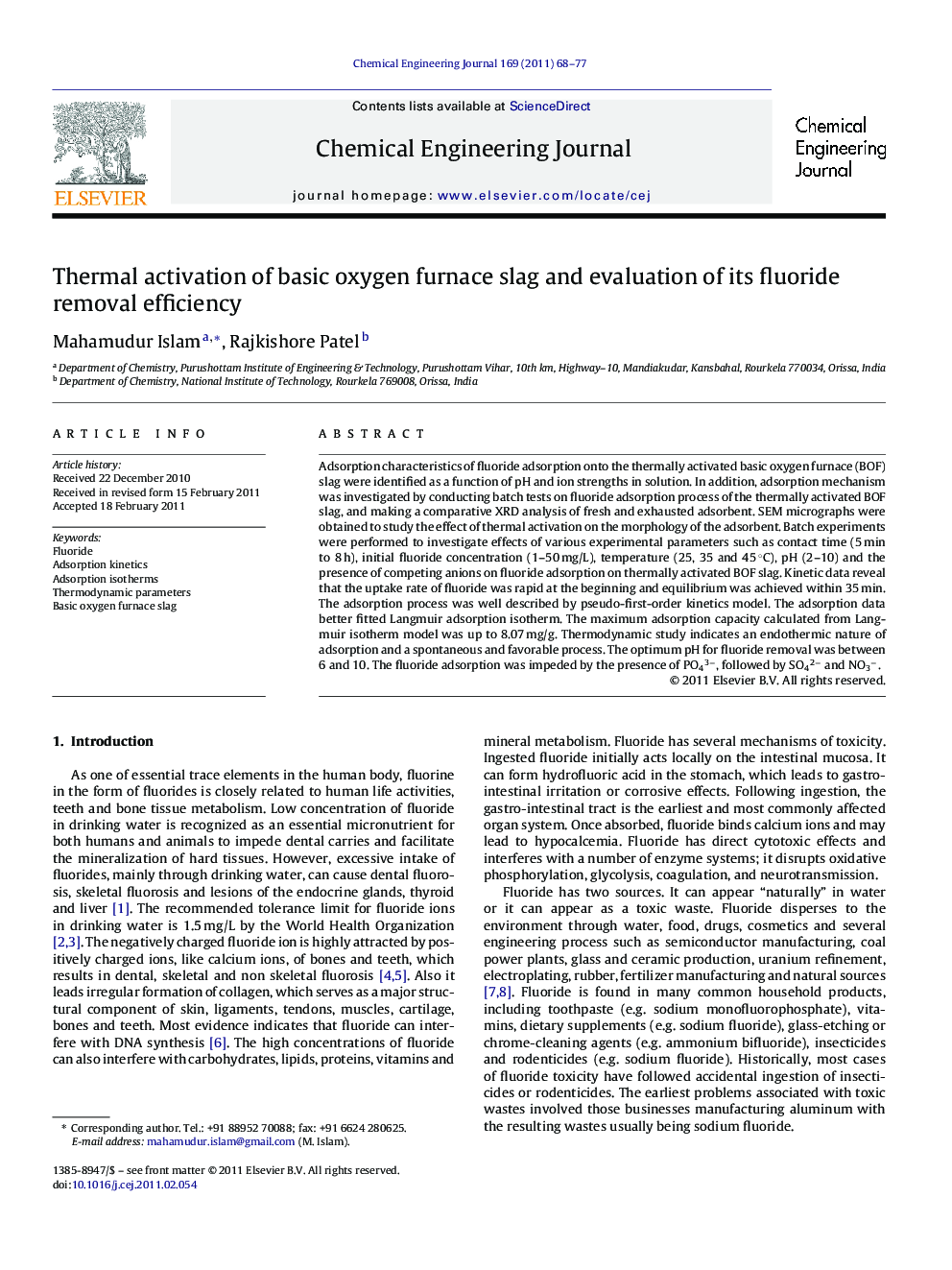| Article ID | Journal | Published Year | Pages | File Type |
|---|---|---|---|---|
| 151205 | Chemical Engineering Journal | 2011 | 10 Pages |
Adsorption characteristics of fluoride adsorption onto the thermally activated basic oxygen furnace (BOF) slag were identified as a function of pH and ion strengths in solution. In addition, adsorption mechanism was investigated by conducting batch tests on fluoride adsorption process of the thermally activated BOF slag, and making a comparative XRD analysis of fresh and exhausted adsorbent. SEM micrographs were obtained to study the effect of thermal activation on the morphology of the adsorbent. Batch experiments were performed to investigate effects of various experimental parameters such as contact time (5 min to 8 h), initial fluoride concentration (1–50 mg/L), temperature (25, 35 and 45 °C), pH (2–10) and the presence of competing anions on fluoride adsorption on thermally activated BOF slag. Kinetic data reveal that the uptake rate of fluoride was rapid at the beginning and equilibrium was achieved within 35 min. The adsorption process was well described by pseudo-first-order kinetics model. The adsorption data better fitted Langmuir adsorption isotherm. The maximum adsorption capacity calculated from Langmuir isotherm model was up to 8.07 mg/g. Thermodynamic study indicates an endothermic nature of adsorption and a spontaneous and favorable process. The optimum pH for fluoride removal was between 6 and 10. The fluoride adsorption was impeded by the presence of PO43−, followed by SO42− and NO3−.
